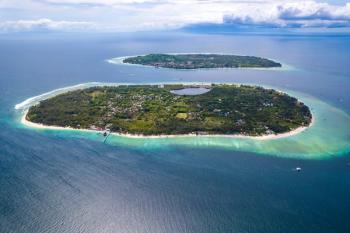
- Application Notebook-02-11-2011
- Volume 0
- Issue 0
FT-IR Diffuse Reflectance Sampling with an Environmental Chamber for In Situ Reaction Monitoring
FT-IR diffuse reflectance sampling coupled with an environmental temperature chamber offers a convenient method to study sample degradation, to evaluate catalyst efficiency, and to determine reaction pathways as a function of temperature and pressure.
J.L. Briggs, PIKE Technologies
FT-IR diffuse reflectance sampling coupled with an environmental temperature chamber offers a convenient method to study sample degradation, to evaluate catalyst efficiency, and to determine reaction pathways as a function of temperature and pressure.
The aim of this application note is to present data from a model system to illustrate the FT-IR technique of diffuse reflectance used in combination with an environmental temperature chamber. Specifically, the dehydration of calcium oxalate monohydrate was monitored in situ.
Instrumentation
The PIKE DiffusIR™, a diffuse reflectance accessory, was used in conjunction with the PIKE environmental temperature chamber (Figure 1). The temperature range of the chamber used in this application was from ambient to 500 °C. Two other chambers are available, an ambient to 900 °C and a -150 to 500 °C low temperature version. Pressures up to 1500 psi may be achieved by using a high pressure adapter with the heated temperature chamber models. Furthermore, the chamber design allows for reacting or inert gases to be flowed through the sample.
Figure 1: The PIKE DiffusIR with environmental sampling chambers and temperature controller.
Measurement Parameters
Calcium oxalate monohydrate was mixed at a 1% level with KBr. The mixture was loaded into the porous-bottom ceramic sample cup and the cup was placed in the chamber. The loaded chamber was then introduced into the DiffusIR and secured with the push-lock pins for a tool-less insertion. The sample was held at 80 °C for 30 min to remove surface water from the sample followed by heating to 160 °C at a rate of 5 °C/min. Spectra were collected every 5 °C. A constant vacuum of 0.1 × 10-6 Torr was applied to the chamber to remove water vapor throughout the experiment.
All spectra were collected at 8 cm-1 spectral resolution over the range of 4000–400 cm-1 . Twenty-four scans were co-added at each sampling temperature. A DTGS detector was used.
Application Results
The Kubelka-Munk transformation was used to linearize the spectral data. The spectra are shown in Figure 2. Most all of the absorbance bands between 3700–2800 cm-1 are attributed to H-O-H stretching, while an absorbance band near 3258 cm-1 is a result of the H-O-H bending overtone (1). H-O-H bending bands are located at 949 and 883 cm-1 . Upon heating, bound water is released as may be observed by the decreasing absorbance bands of H-O-H vibrations as a function of temperature. The type of spectra collected in this application note could be used to determine kinetics parameters. Christy and colleagues offer kinetic models for a similar system (2). They show that the dehydration of calcium oxalate monohydrate is caused by two reactions.
Figure 2: FT-IR spectra of calcium oxalate monohydrate heated from 80 to 160 °C at 5 °C/min. All spectra displayed at equivalent y-scaling.
References
(1) I. Petrov and B. Soptrajanov. Spectrochim Acta Part A 31:309–316, (1975).
(2) A. Christy, et al. Appl. Spectroscopy 48(5), 561–568, (1994).
PIKE Technologies
6125 Cottonwood Drive, Madison, WI 53719
tel. (608) 274-2721
Website:
Articles in this issue
almost 15 years ago
Generating Purge Gas for FT-IR Spectroscopyalmost 15 years ago
Spectroscopy Market: Weathering the Storm and on the Path to Recoveryalmost 15 years ago
Fat Analysis in Food and Feed with NIRalmost 15 years ago
Finding Gold Just Became Easier than Ever Imaginedalmost 15 years ago
QA/QC of Coatings and Surfaces via Exoscan Handheld FT-IR Analyzeralmost 15 years ago
Mapping Protein Conformational Stability Using Automated CDalmost 15 years ago
The Application Notebook - A Stable Force Over the YearsNewsletter
Get essential updates on the latest spectroscopy technologies, regulatory standards, and best practices—subscribe today to Spectroscopy.




